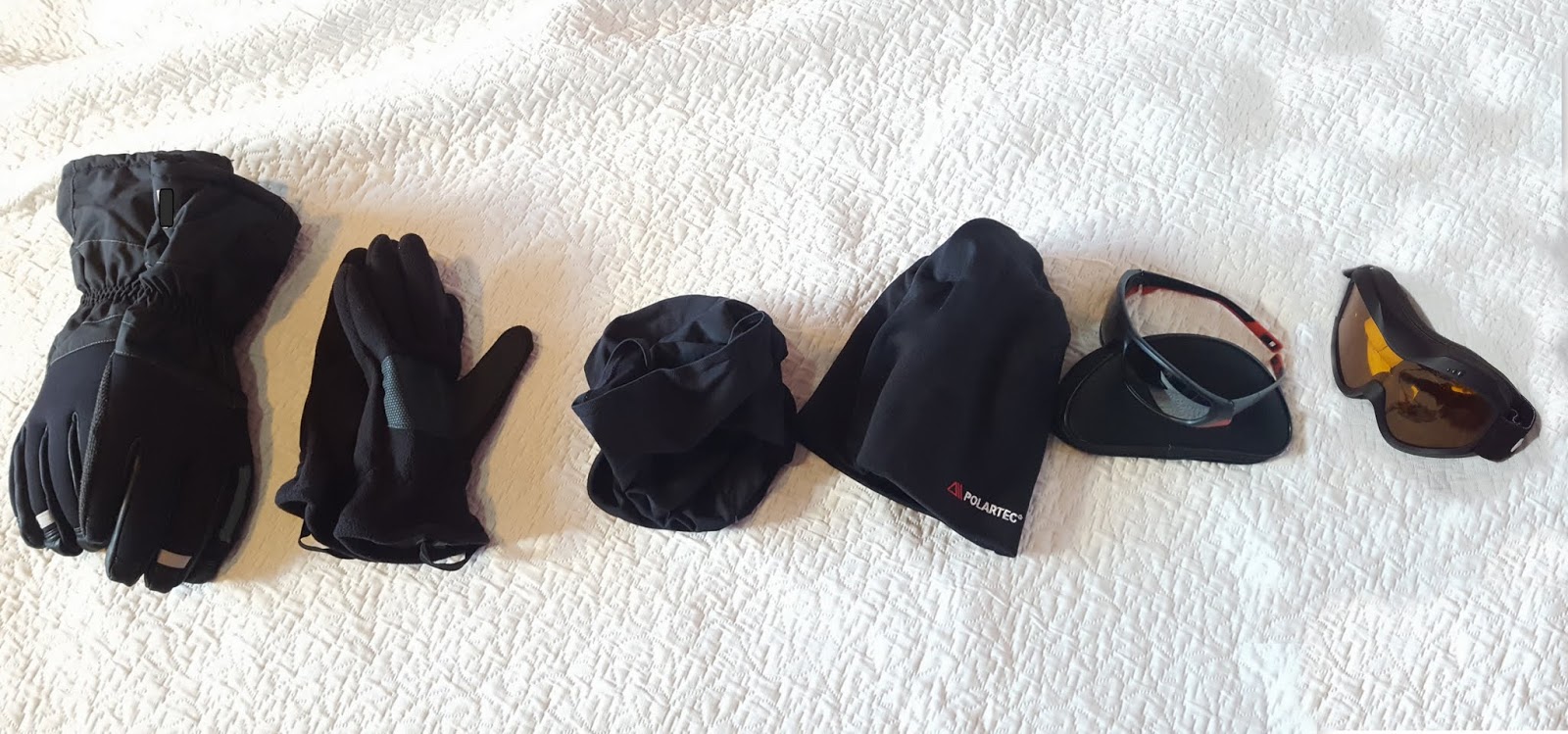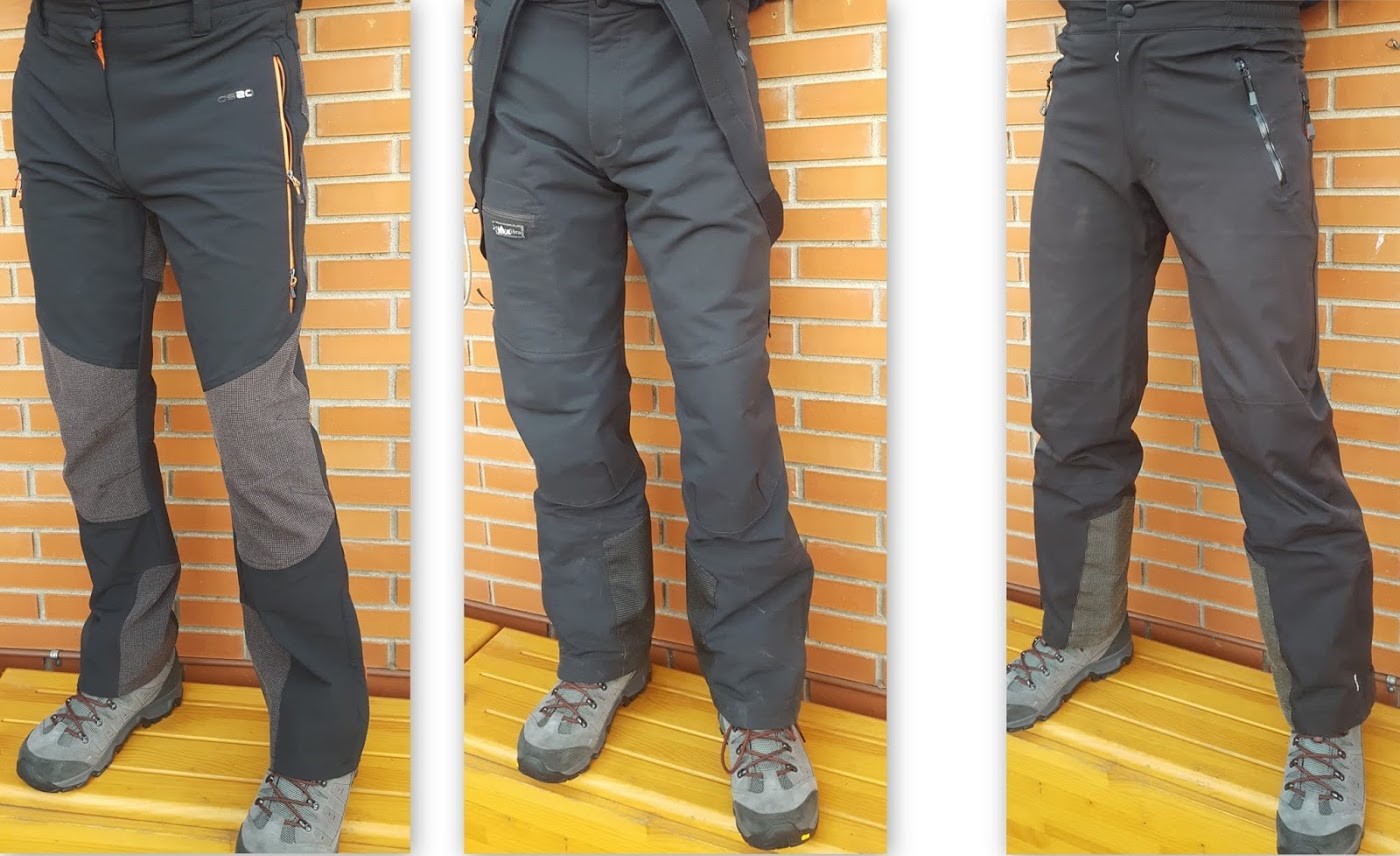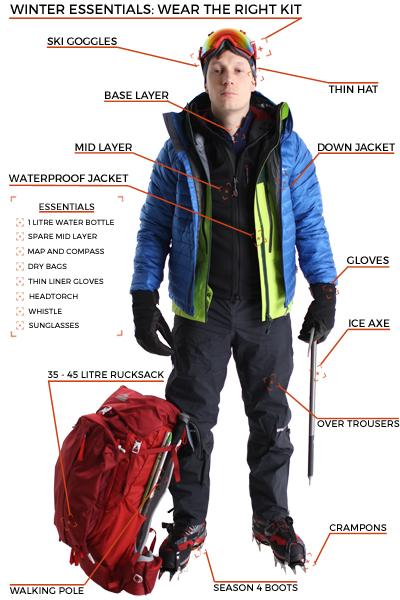A good hydration is necessary for the practice of any outdoor sport . But when the cold is intense, it is not a good idea to drink water or cold isotonic drinks. Bring a good thermos with hot broth is a great decision. It is also important to include soups at meals and dinners at the camp fire , if possible. And drink water, of course, but make sure it is not excessively cold.
As for the food, it is a good time to enjoy it warm. If you have decided to go camping in winter, do not forget the camping gas to prepare or warm comforting dishesas cooked vegetables. If you are going to be en route during the day or you are camping free, that will be more complicated. Consume energy foods such as bars, nuts or dark chocolate.
The clothes and the material that we are going to put, even any type of garment, whether it is mountain or not, does not give heat, the heat is generated by us and the garments to use what they have to do is to prevent the heat from leaving completely cold, once we have clarified this point we enter into matter.
Lorem ipsum dolor sit amet, consectetur adipiscing elit. Ut elit tellus, luctus nec ullamcorper mattis, pulvinar dapibus leo.
“Not always the best known brands give better benefits for the price that you can afford. “
Footwear for Winter Trekking
Footwear is one of the most important elements, which can make our experience on a route pleasant or a real torment. The guidelines that we are going to give here are generic, for medium level hiking routes, then there are specialized footwear for medium and high mountain, etc.

Characteristics of hiking shoes:
- Side protections
- Toe protection
- Heel protection
- External material resistant to abrasion (preferably waterproof and breathable membrane)
- Sole with heel, of sufficient thickness and semi-rigid (little twist)
It is not a good idea to go hiking with athletic shoes (for example, athletics), as they do not have proper cleats and the sole is very flexible: we will have many chances to hurt our feet.
Winter Trekking Socks
The socks are the second skin of the foot, which protects it (cold and chafing) and which allows the movement to be transmitted to the boot in a smooth way.
Even if we wear good boots, with unsuitable socks, we will end up with blisters, wounds on the feet, feeling cold or simply more tired from forcing the foot.
Characteristics of good socks:
- They always have to have the cane higher than the boot
- Preferably they are made of synthetic fiber, since it breathes better and does not retain moisture like natural fiber
- They have to have an elastic component to fit the foot without forming wrinkles. The wrinkles of the socks are the main enemy of the foot in hiking
- They can have reinforcements in the toe and heel, which are the areas that normally support more efforts during the march.
The thickness will logically depend on the weather conditions, that is, there are socks for winter, designed especially to isolate the foot from the cold. And summer socks, thinner and lighter.
Appropriate Clothing for Winter Trekking
To keep body warm during winter trekking rule of the 3 layers body will be followed:

- The first layer is the one that is stuck to the body, like a second skin, the most advisable is a thermal T-shirt
- The second layer is the coat. It will normally be a synthetic fabric fleece. It can be closed or opened (with zipper). Generally, a second open layer is more interesting because it allows us to regulate the ventilation of the body depending on physical activity and weather conditions.
- The third layer , also known as membrane. The third layer will normally be a waterproof jacket which protects the outside environment: rain, snow, wind … This layer is waterproof, and it is recommended that it is also breathable so that moisture generated by sweat can not accumulate .
Protective Clothing / Accessories
It will also depend on the conditions that we will find but in general it is a good idea to bring gloves , winter hat , panties , hat , sunglasses for winter trek (very important if we go to snow areas)

Trousers For The Legs
For the legs the rule of layers is also applied, but in the case of hiking for outings of a day it is normal to wear a single layer trouser or a second inner skin that could be thermal meshes. But keep in mind that as the march goes on, if it is less cold than expected, the double layer can be uncomfortable and it is not as easy to play with the layers as with the top.

In general it is preferable to wear long pants, because the pants protect the legs if we go through areas of thorns, dry grass, low branches, etc.
Hydrate And Feed Yourself Properly
Be Always Informed And Located
Currently the technology allows to do it although not always in all places, especially in the mountains. Whenever possible, keep your mobile with coverage and geolocated . It is important that someone you trust know where you are where you plan to go. Before going trekking in winter and during the camping, find out how much time you are going to do both in the camping area and during trips to it.
Summary:
Basics
- Backpack of 28l maximum
- At least 1l of water (in camelbak bag or bottle)
- Chocolatinas or nuts, always give strength
- Solar cream factor 50
- Sunglasses (polarized or photochromic, if possible)
- Map or GPS (watch with the batteries of the mobiles)
Upper part
- Breathable short sleeve t-shirt . Do not wear cotton clothes, sweat twice and then take a lot to dry
- Fleece . As you ascend, the temperature drops. Do not play it, take it even if it’s hot at the start
- Rain coat . The layer will protect from rain and wind. It does not weigh, so always take it with you
- Sun hat . The sun if it squeezes is better to protect
Bottom
- long pants (depending on the weather and height).
- Summer socks , that transpire

Socks , tights trousers , thermal , fleece , warm jacket , buff , gloves , boots , Body lotion , Lip balm. Not so much, right?
Respect nature. Do not shout and do not make too much noise (you will bother the animals and other people who are making the route). Of course do not leave garbage or waste, not even organic waste (peeling fruit, etc.), collect it all in a bag and take it back.